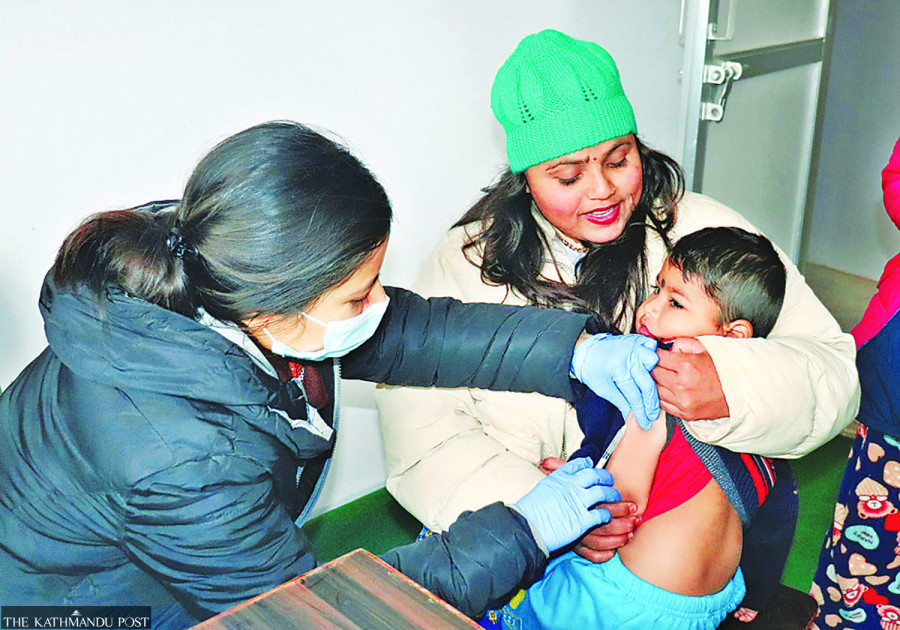Editorial
Holes in the vaccination drive
The measles outbreak in ‘fully-immunised’ Banke indicates big lapses in the immunisation campaign.
Banke district in Lumbini province was declared fully immunised last March. But a few days ago, measles, a disease that could have been warded off with two doses of the MMR vaccine, claimed the life of a 31-month-old toddler in Nepalgunj sub-metropolis. According to the World Health Organisation, the measles vaccine is highly effective. One dose gives at least 85 percent immunity; two doses confer almost 100 percent protection. But in the absence of regular immunisation, around 80 cases have been reported in Nepalgunj. But this could be only scratching the surface, with potentially hundreds of children already in the grips of this highly contagious disease. Early measles symptoms include high fever, runny nose, bloodshot eyes and tiny white spots inside the mouth. Some children may suffer from severe complications, even leading to death.
That kids have to fall severely ill or even die because of a preventable disease suggests gross mismanagement in Nepal’s government-run immunisation programme and collective failure of the health authorities. A preliminary study of the infected children found that they had never been vaccinated under Nepal’s National Immunisation Programme (NIP). The Nepal Demographic and Health Survey 2022 shows that 4 percent of children aged 12-23 months got no vaccination despite the government’s commitment to inoculate all children with 13 types of free vaccines, including measles. The latest measles outbreak begs the question: On what grounds did Banke authorities declare it fully immunised? And why were the children there never vaccinated?
Following Nepal’s commitment to eliminate measles by 2023—after missing the 2019 deadline—several government units have been rushing to declare districts fully vaccinated. Child health experts are concerned that a hasty declaration could give people a false sense of security, making vaccination seemingly less important. According to the health survey, Covid-19 induced lockdowns severely affected routine vaccination. But what explains the failure in immunisation before that? Most of the measles cases in Nepalgunj were reported among marginalised and backward communities with low awareness of regular immunisation and low literacy. Bogus rumours about the side effects of measles vaccines were an added disincentive. That said, the measles vaccine coverage was higher in rural areas (85.6 percent) than in urban areas (79.9 percent) during the 2015-16 measles-rubella supplementary immunisation activity campaign, according to a 2022 report.
Rather than trying to push awareness campaigns from above, a bottom-top approach to educating, counselling and raising awareness about the severity of diseases like measles is the need of the hour. This will also entail doing enough groundwork, data collection, and door-to-door observation to check the local children’s vaccination status. Moreover, even the areas declared measles-free need to be constantly monitored to detect a possible reappearance. There is no room for complacency. Even those vaccinated and those above 15 are at risk of measles due to its high person-to-person contagiousness. A small number of infected children can endanger thousands of others.
Putting aside the 2023 goal, the Health Ministry should train its focus on quickly searching and jabbing all children of eligible age, all over the country. There is no question of sparing resources in what could turn into a national health crisis.




 12.12°C Kathmandu
12.12°C Kathmandu














